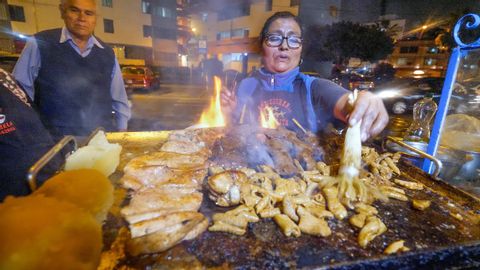
字幕と単語
Street Food in Peru - ULTIMATE 14-HOUR PERUVIAN FOOD + Market Tour in Lima!
00
許景發 が 2021 年 05 月 29 日 に投稿保存
動画の中の単語
common
US /ˈkɑmən/
・
UK /'kɒmən/
- n. (c./u.)共有地;(地域共同体が所有する)共有地
- adj.公共の;典型的;一般の;広まっている;下品な;普通名詞の
A1 初級
もっと見る エネルギーを使用
すべての単語を解除
発音・解説・フィルター機能を解除
